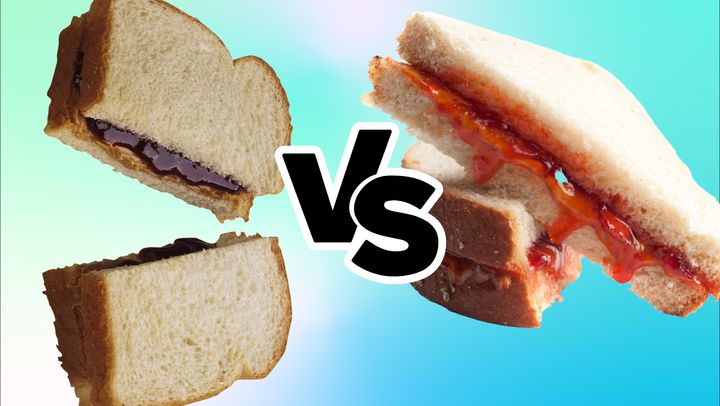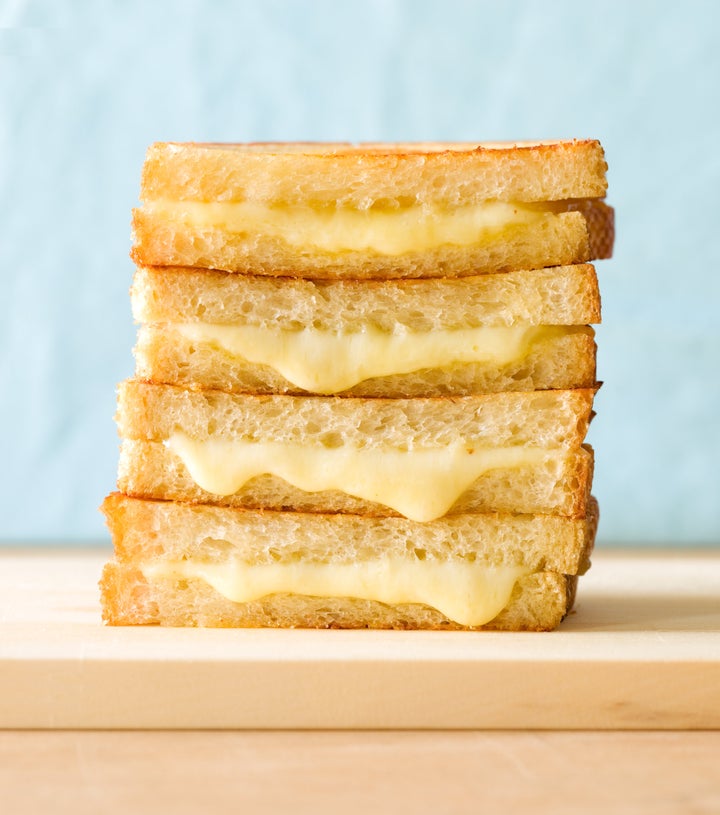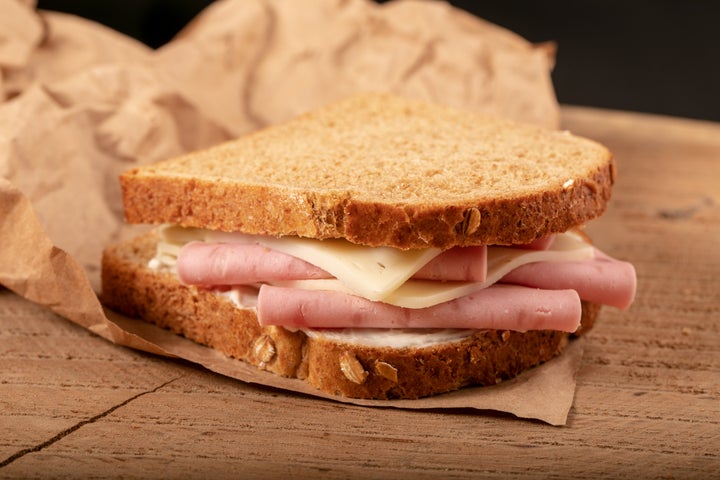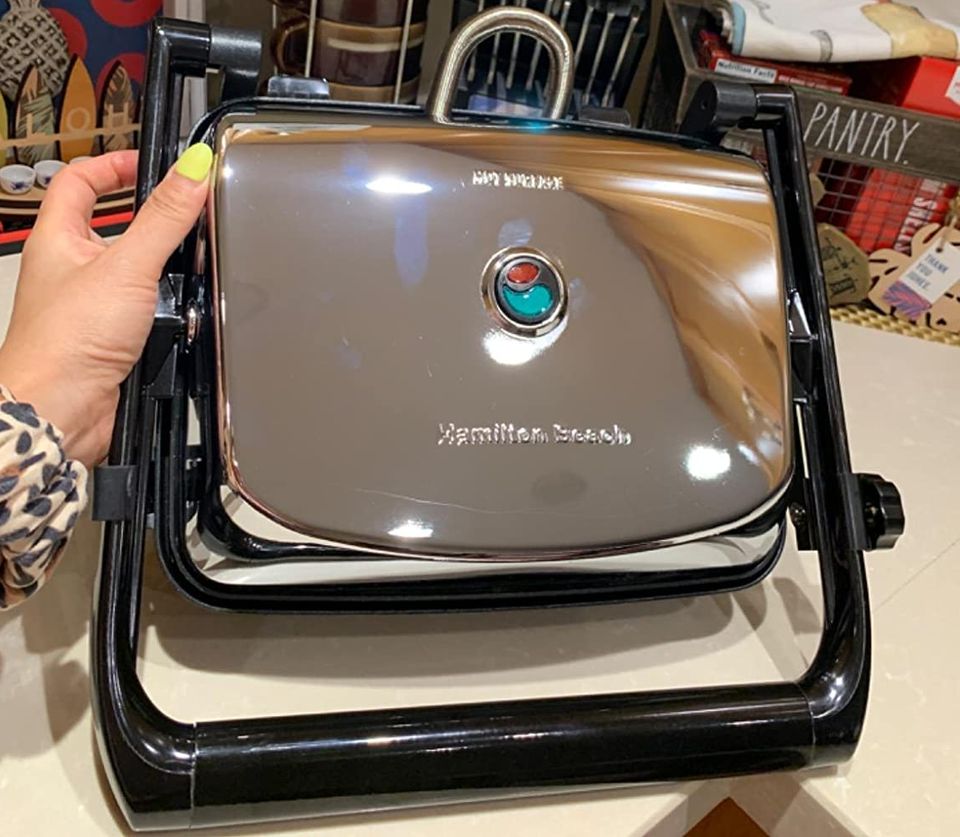
Let it be known: Sandwiches are a source of great debate.
Whether discussing whether a hot dog can qualify as one or the proper amount of mayo to slather on, conversations regarding sandwiches can get hilariously heated — but the shape in which your sandwich is cut seems to elicit the strongest responses.
Specifically, should a sandwich be cut horizontally or diagonally? It is, it seems, a question as old as, well, bread.
Less than a year ago, cookbook author Deb Perelman posted a video on Instagram showcasing the making of her (delicious, we should say) cream of tomato soup, which she prepared alongside a grilled cheese sandwich.
Although the focus of the clip was her soup, most followers took to the comments section of her post to either celebrate or contest the way the chef cut the grilled cheese on camera — horizontally, into two rectangles.
“Not only must the sandwiches be cut diagonally, they should be in 4 quarters. 4 triangles for dipping,” someone wrote below the clip.
“Love your recipe and video,” someone else wrote. “That said, the superiority of a diagonal slice is undisputed.”
A third commenter took on the opposing view, specifically noting how a rectangular cut would offer more uniform bites. “It’s simple geometry,” the person stated.
The post garnered over 11,000 likes and nearly 300 comments. Clearly, people care about the way their sandwiches are cut — but is one slit superior to the other?
Let’s define what type of sandwich we’re talking about.
Before even discussing the best way to cut it, it’s important to understand what kind of sandwiches apply to these cutting rules.
“That’s the broader question at the heart of this,” said Jonathan Streep, the owner and CEO of Italian specialty sandwich shop Alidoro. “A burger is a great example. Should that be considered a sandwich? I don’t even know.”
According to Merriam-Webster, a sandwich consists of “two or more slices of bread or a split roll having a filling in-between.”
That is, generally speaking, a definition that Streep agrees with — except for when it comes to burgers and, for example, grilled cheeses.
“Basically, if it doesn’t have its own identity or name, like a burger, then it qualifies as a sandwich,” he said.
For chef Itta Werdiger, a great sandwich is about more than food between two pieces of bread. “The complexity of the ingredients in between those two pieces needs to come together with a little crunch amid the softness,” she said. A balance of fat and acid is key.”
Understanding what a sandwich is might seem besides the point when it comes to best cutting practices — until the discussion lands on grilled cheeses.
In fact, although Streep is, generally speaking, a horizontal-cut guy, he noted that slicing a grilled cheese horizontally just doesn’t seem right. Given that the food has its own identity — we call it a grilled cheese and not a cheese sandwich, mostly — his theory follows.
But now, more on that cut.

Horitonzal vs. Diagonal: Pros And Cons
According to Streep, cutting horizontally into rectangles is always best for two separate reasons, one involving aesthetics and the other taste-related.
“When you’re looking at a sandwich, there is a visual component to the experience,” he said. “I’m a big first impression guy and, when you open that sandwich as soon as you cut it you want to be able to see everything that’s in it.”
Streep explained that, even when photographing the food, a horizontal cut usually proves most efficient in terms of showcase: people staring at the image can more clearly see what the bread is stuffed with.
Perhaps most important, though, is the uniform flavor profile that a horizontal slice guarantees.
When you cut sandwiches diagonally, said Streep, you create an edge that gives rise to two separate issues: on the one hand, that edge won’t boast the same amount of ingredients as the middle of the sandwich, therefore not tasting the same as the edges.
On the other hand, the cut might create a problem if you’re warming your sandwich.
“When you cut diagonally, there is less surface area and therefore more susceptibility to burning the bread [at the edges],” Streep explained. “We like to cut it straight down so you don’t have that thinning out of the bread that makes it vulnerable.”
At Alidoro, in fact, all sandwiches are cut straight down the middle before being put into the oven or press to heat up.
There is, however, an opposing view. Richard Zaro, a team member at New York City-based deli Cutlets, prefers the diagonal cut, saying the benefit of a diagonal cut is the actual bite that the slice gives birth to, which is considered by many to bemthe single most delicious bite of a sandwich.

“We like to cut diagonally because it creates that corner piece that is a different texture compared to the rest,” Zaro said. “That’s usually everyone’s favorite.”
The bite is usually juicier than the rest, offering a burst of flavors that’s the likely result of the concentration of all ingredients.
Funnily enough, Streep also believes that to be the best portion of the sandwich, but its would compromise the shop’s devotion to uniformity, hence his stance in the pro-rectangle camp.
“It’s a great bite that I love,” he said. “But given the burning of the bread issue at the corners, I’m going to have to go for [horizontal].”
Interestingly, Zaro also mentioned visuals when praising the diagonal cut. According to him, pictures of triangular slices of a sandwich actually look better than its straighter counterparts.
“It just looks prettier and it is more aesthetically pleasing,” he said. “Basically, cutting diagonally creates more value than cutting straight down.”
Werdiger shares Zaro’s feelings — when it comes to both taste and looks.
“I like to do a bias cut for aesthetic reasons because it gives the sandwich an edge, and I’m not just saying in terms of ‘coolness,’” she explained. “You’ll get an actual edge that is an entrance into the sandwich with that little tip on it.”
Given the lack of an official culinary instruction manual, at least when it comes to sandwich cutting guidelines, it all goes back to personal taste — which, in a way, is one of the strengths of a sandwich: the food can really be whatever you want it to be. Just be prepared to defend your very own version of the dish—there is bound to be someone who disagrees with you out there.
What are your preferences? Sound off in the comments!
